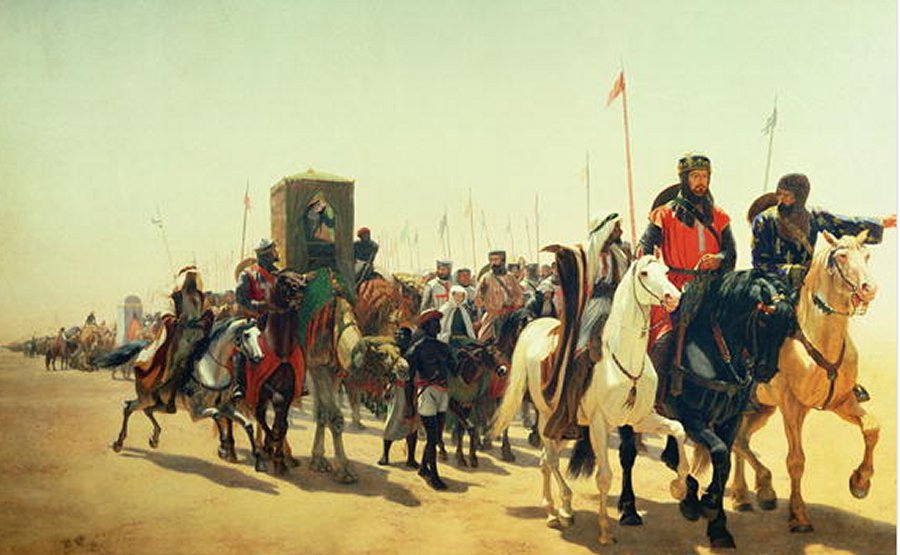Did Richard The Lionheart Order Assassins To Kill Conrad Of Montferrat, King Of Jerusalem?
Ellen Lloyd - AncientPages.com - Not all battles are won or lost on the field. It’s a fact that most warriors and their leaders are aware of. Military strategy and tactics vary greatly depending on the situation. Sometimes, there is a need to use the element of surprise to conquer your enemy. There are many historical accounts of how warriors used different means of deception to gain a decisive advantage.
Assassins Dress As Christian Monks And Murder Conrad Of Montferrat
On 28 April 1192, Conrad of Montferrat, King of Jerusalem and Lord of Tyre, a Phoenician city (today located in Lebanon), was assassinated. The killers were immediately captured and executed, but historians have discovered the event was part of something much larger. The murder was well-planned in advance, but who was responsible remains a puzzle until this day. Confessions made under dubious circumstances indicated King Richard Lionheart was accountable for the murder. He was accused of using Assassins dressed as Christian monks to kill the newly elected king.
Historians have long debated whether the Christian Crusader, King Richard Lionheart, could have co-operated with the Order of Assassins, an Islamic sect, to remove Conrad of Montferrat from power.
Left: Imaginary portrait of Conrad, c. 1843, by François-Édouard Picot for the Salles des Croisades at Versailles. Image credit: Public Domain Right: A Knights Templar. Image Credit: Public Domain
If Richard the Lionheart, one of the greatest Crusaders of all time, really ordered the Assassins to commit the murder, then the history of the Christian occupation of the Holy Land would have to be re-written.
As previously mentioned on Ancient Pages, King Richard the Lionheart was the son of the mighty King Henry II and the Eleanor of Aquitaine, one of the few women of the Middle Ages who decidedly influenced the fate of the states
King Richard the Lionheart has gone to the history books as a military mastermind, famous leader, and Crusader, but he was not one of the best English Kings. During his 10-year reign, he spent only six months in England. He didn’t even speak English and had no interest in ruling England.
He wanted to become a famous knight, and when the opportunity arose, he quickly used it. He gathered an army of knights and traveled to the Holy Land to fight in the name of Christianity.
The connection between King Richard the Lionheart and the murder of Conrad of Montferrat has long puzzled historians. Many aspects of the story are still shrouded in mystery, and King Richard the Lionheart denied involvement in the killing.
With no possibility of hearing witnesses, it’s difficult to determine what really happened on April 28, 1192, and much of our knowledge is based on hearsay.
Nevertheless, what most historians agree on, according to Patrick A. Williams, is that “at the dinner hour Conrad had been at the dwelling of the bishop of Beauvais; he left and shortly thereafter was attacked by two young men with daggers. They knocked him from his horse and fatally wounded him, then they attempted to flee. One was immediately killed, the other found temporary refuge in a nearby church.”
Apparently, both assassins had been dressed as Christian monks. When the second killer has been captured, he confessed under torture that King Richard the Lionheart was responsible for the murder.
Would King Richard the Lionheart Really Co-Operate With The Assassins?
Both killers were Hashshashin, the first known assassins who started to operate in Persia, Syria, and Turkey before finally spreading throughout the Middle East. The Order of Assassins, formally known as the Nizari Ismailis became famous for carrying out espionage and assassinations of key enemy figures.
The notion that King Richard the Lionheart could have used their services seems unlikely to many historians. The Knights Templar and the Order of Assassins did not cooperate. In fact, although the Crusaders acknowledged the Nizari, the Christian warriors also feared these trained killers, responsible for the systematic elimination of opposing figures.
The Assassins disguised themselves as Christian monks. Image credit: Public Domain
Over the course of 300 years, the Order of Assassins killed several prominent leaders, including two caliphs, several viziers, sultans, and Crusader leaders.
For this reason alone, it seems far-fetched to think that Crusader Lionheart would use the services of the Order of Assassins. However, it’s ignorant to dismiss the possibility that the English King was in contact and co-operation with the Nizari. Not all details are known, and there could be certain historical aspects and events that have never been brought to light. Historians simply do not possess adequate data to determine the course of events at the time.
Nevertheless, those who believe that King Richard the Lionheart was never involved in the murder maintain it would be extremely difficult to persuade the Assassins to commit this deed because they had nothing to win by helping a Christian leader.
Could Saladin, Sinan Or Henry of Champagne Have Been Responsible For The Murder?
Patrick A. Williams speculated that Henry of Champagne, who participated in the Third Crusade along with his uncle King Richard the Lionheart and Philip II, King of France, may have been responsible for the murder. It is possible that Henry of Champagne did order the Assassins to get rid of Conrad of Montferrat, but it would have been a risky undertaking without his uncle's support.
Rashid ad-Din Sinan the Grand Master of the Assassins at Masyaf, successfully kept Saladin off his territory. Image Credit: Public Domain
Another suspect was Sinan, the grandmaster of the Assassins, also known as the Old Man of the Mountain. Sinan was a key figure in the history of the Crusades, and he was also the chief enemy of Saladin.
Was King Richard the Lionheart framed for a murder he never committed? We may never know the whole truth, but the English Crusader King denied involvement in killing Jerusalem’s King.
The murder of Conrad of Montferrat remains an unsolved historical mystery.
Updated on May 16, 2022
Written by Ellen Lloyd – AncientPages.com
Copyright © AncientPages.com All rights reserved. This material may not be published, broadcast, rewritten or redistributed in whole or part without the express written permission of AncientPages.com
Expand for referencesMore From Ancient Pages
-
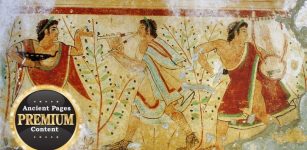 Intriguing Evidence Etruscans May Have Visited Canada
Ancient Mysteries | Sep 30, 2018
Intriguing Evidence Etruscans May Have Visited Canada
Ancient Mysteries | Sep 30, 2018 -
 Secrets Behind 2,000-Year-Old Roman Water Management Revealed
Ancient Technology | Aug 4, 2023
Secrets Behind 2,000-Year-Old Roman Water Management Revealed
Ancient Technology | Aug 4, 2023 -
 Aztecs: Facts And History About The Ancient And Powerful Mesoamerican Civilization From Aztlán
Civilizations | Apr 10, 2017
Aztecs: Facts And History About The Ancient And Powerful Mesoamerican Civilization From Aztlán
Civilizations | Apr 10, 2017 -
 Gunung Padang – Remarkable Megalithic Site In Indonesia
Civilizations | Jun 14, 2014
Gunung Padang – Remarkable Megalithic Site In Indonesia
Civilizations | Jun 14, 2014 -
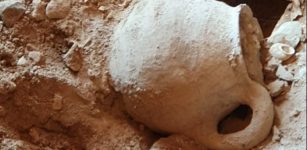 Cave 53 In Qumran Region In Judean Desert Reveals More Secrets
Archaeology | Feb 28, 2022
Cave 53 In Qumran Region In Judean Desert Reveals More Secrets
Archaeology | Feb 28, 2022 -
 Waru Waru – Ancient Andean Irrigation System Brought Back To Life
Ancient History Facts | Apr 28, 2018
Waru Waru – Ancient Andean Irrigation System Brought Back To Life
Ancient History Facts | Apr 28, 2018 -
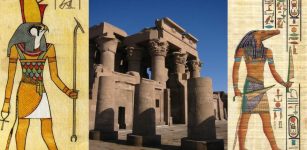 Unusual Double Temple Of Kom Ombo Dedicated To Crocodile God Sobek And Falcon-Headed God Horus
Featured Stories | Mar 14, 2016
Unusual Double Temple Of Kom Ombo Dedicated To Crocodile God Sobek And Falcon-Headed God Horus
Featured Stories | Mar 14, 2016 -
 First Pompeiian Human Genome Sequenced Fron An Individual Who Died After The Eruption Of Mount Vesuvius In 79 C.E
Archaeology | May 26, 2022
First Pompeiian Human Genome Sequenced Fron An Individual Who Died After The Eruption Of Mount Vesuvius In 79 C.E
Archaeology | May 26, 2022 -
 Never-Ending Battle Of The Oak King and Holly King – Confrontation Of The Light And The Darkness
Celtic Mythology | Dec 17, 2021
Never-Ending Battle Of The Oak King and Holly King – Confrontation Of The Light And The Darkness
Celtic Mythology | Dec 17, 2021 -
 Effects Of The Volcanic Eruption In Alaska Rippled Through Ancient Egypt During Cleopatra’s Reign
Archaeology | Jul 26, 2022
Effects Of The Volcanic Eruption In Alaska Rippled Through Ancient Egypt During Cleopatra’s Reign
Archaeology | Jul 26, 2022 -
 Legendary Brahan Seer Of The Clan Mackenzie (Coinneach) – The Scottish Nostradamus
Featured Stories | Jan 21, 2025
Legendary Brahan Seer Of The Clan Mackenzie (Coinneach) – The Scottish Nostradamus
Featured Stories | Jan 21, 2025 -
 Skeleton Of Last Trojan Discovered – Ancient City Of Troy May Have Been A Religious Sanctuary – Archaeologists Say
Archaeology | Sep 21, 2018
Skeleton Of Last Trojan Discovered – Ancient City Of Troy May Have Been A Religious Sanctuary – Archaeologists Say
Archaeology | Sep 21, 2018 -
 Face Of Norwegian Boy Who Lived 8,000 Years Ago Reconstructed
Archaeology | Mar 16, 2023
Face Of Norwegian Boy Who Lived 8,000 Years Ago Reconstructed
Archaeology | Mar 16, 2023 -
 Knights Templar’s Legendary Sword In Stone In Terminillo Mysteriously Disappeared – Where Is It Hidden?
Featured Stories | May 3, 2021
Knights Templar’s Legendary Sword In Stone In Terminillo Mysteriously Disappeared – Where Is It Hidden?
Featured Stories | May 3, 2021 -
 Enigmatic Human Fossil Jawbone May Be Evidence Of An Early Homo Sapiens Presence In Europe
Evolution | May 2, 2023
Enigmatic Human Fossil Jawbone May Be Evidence Of An Early Homo Sapiens Presence In Europe
Evolution | May 2, 2023 -
 Chaneques: Mischievous Legendary Tricksters In Mexican Folklore
Featured Stories | Apr 14, 2020
Chaneques: Mischievous Legendary Tricksters In Mexican Folklore
Featured Stories | Apr 14, 2020 -
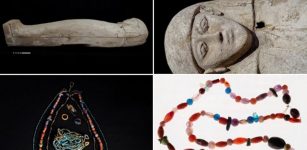 Beautiful Necklaces And Amulets Discovered In Ancient Egyptian Tomb
Archaeology | Apr 27, 2020
Beautiful Necklaces And Amulets Discovered In Ancient Egyptian Tomb
Archaeology | Apr 27, 2020 -
 Mediterranean Sea Was Hotter 2,000 Years Ago And Contributed To The Fall Of The Roman Empire
Archaeology | Jul 27, 2020
Mediterranean Sea Was Hotter 2,000 Years Ago And Contributed To The Fall Of The Roman Empire
Archaeology | Jul 27, 2020 -
 Recent Unexpected Findings Of Early Sweet Potato Cultivation In Polynesia
Archaeology | Oct 2, 2024
Recent Unexpected Findings Of Early Sweet Potato Cultivation In Polynesia
Archaeology | Oct 2, 2024 -
 How Large Was The ‘Giant’ Dunkleosteus Terrelli – Prehistoric King Of The Oceans?
News | Apr 10, 2023
How Large Was The ‘Giant’ Dunkleosteus Terrelli – Prehistoric King Of The Oceans?
News | Apr 10, 2023


